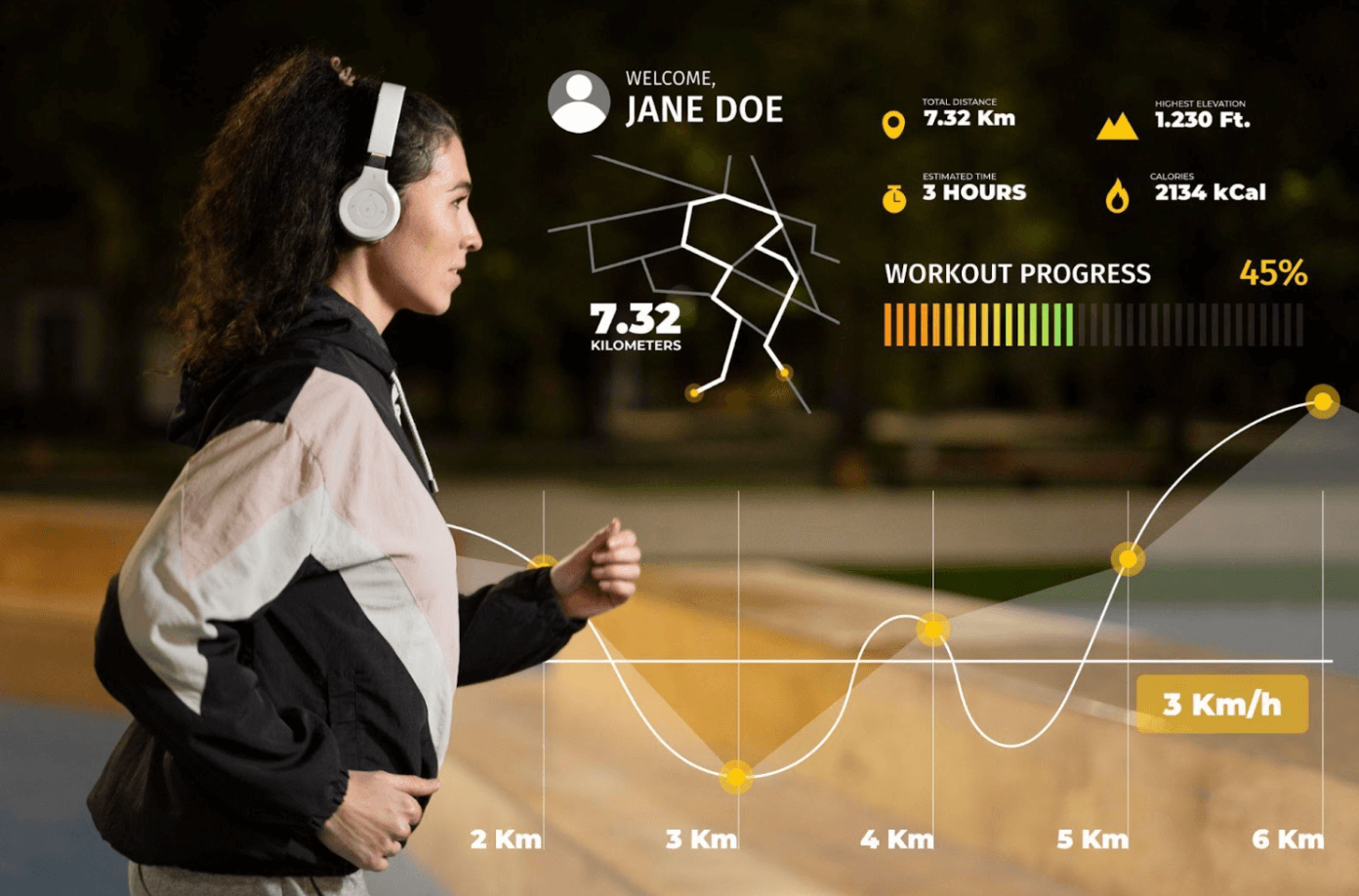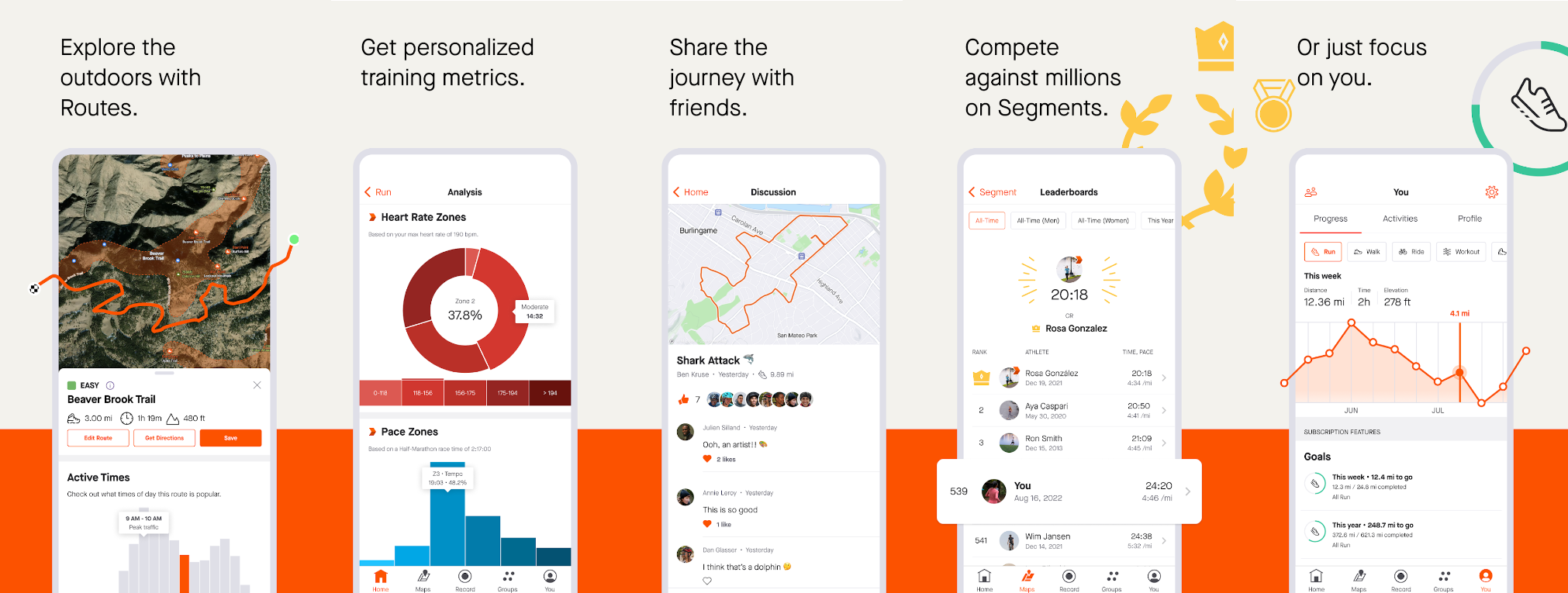
Gamification in Fitness Apps: A Comprehensive Case Study of Strava
Gamification is recognized as an important factor in the notable evolution of the fitness sector in recent years. This approach has made an important difference in increasing user engagement and social interaction during fitness sessions.
In this article, Multiplayer agency explores the use of gamification in fitness apps, with having special focus on how it affects user motivation, social engagement, and the overall fitness experience. As part of the case study, an analysis of Strava, a famous exercise app known for its efficient use of gamification will be reviewed.
Gamification in Fitness Apps
Fitness apps have advanced significantly from their initial tracking features. The addition of gamified elements such as social connections, leaderboards, challenges, achievements, and competitiveness has transformed exercise. This strategy has made physical exercise more dynamic, competitive, and community-focused. Gamified elements provide a sense of accomplishment, which helps encourage user engagement and create a positive fitness community.
The Value of Gamification in Fitness
Motivation and Engagement
By introducing specific goals, difficulties, and incentives, gamification creates a sense of success. Users are encouraged to push themselves beyond their comfort zones and commit to their fitness routines by motivating themselves with competition and accomplishments.
Social Connectivity
A sense of community can be encouraged by the social component of gamification in fitness apps. Users can engage in virtual challenges, communicate with friends, and share accomplishments. This improves users’ motivation and offers a strong support system as they go for fitness.
Data-Driven Improvement
Performance metrics are regularly collected and analyzed in gamification. Users can keep track of their development, create personal goals, and work toward ongoing advancement. The data-driven strategy improves self-awareness and assists users in deciding their fitness objectives.
The Integration of Gamification and Fitness
There is a significant connection between fitness and gamification. Traditional exercise programs sometimes lacked the competitive and interactive components required for long-term engagement. By adding characteristics that are similar to games, gamification fills this gap and increases the enjoyment and fulfillment of exercising.
Features of Gamification Improving the Fitness Experience
Challenges and Achievements
Fitness apps make workouts into missions by incorporating goals and objectives. Users work hard to achieve certain objectives in order to receive badges and credit for their achievements. This develops a feeling of accomplishment and purpose that encourages further participation.
Leaderboards and Competition
Through leaderboards, users may compare their performance to that of others, encouraging competition to be healthy. A strong motivation is the desire to top leaderboards and receive recognition from the fitness community.
Social Sharing and Support
Users can share their progress, accomplishments, and fitness activities with their network thanks to the social component of gamification. Social support, encouragement, and encouragement all make the journey to fitness more enjoyable.
Virtual Races and Challenges
Virtual races and challenges provide an immersive and competitive experience. Users can participate in events regardless of geographical constraints, fostering a global fitness community and adding an element of excitement to their routines.
Strava Case Study: A Gamified Fitness Community
Strava is an excellent example of a fitness software that has successfully integrated gamification features to develop a dynamic and engaging fitness community. Let’s take a deeper look at some of Strava’s notable features and achievements.
What is Strava?
Founded in 2009 by Mark Gainey and Michael Horvath, Strava has become a revolutionary social fitness network. The duo’s initial firm, Kana Communications, saw great success before Strava, which prepared them for the move into revolutionizing the fitness sector. The Swedish word “strive,” which inspired the name “Strava,” represents the company’s core principles of ongoing improvement and goals.
In addition to tracking runs and bike rides, Strava’s main goal is to encourage users to compete with one another when they travel similar routes. The co-founders’ ambitious vision, articulated by former CEO James Quarles, aims to position Strava as “the next great sports brand of the 21st century.”
Headquartered in San Francisco, California, Strava operates as a privately-held company backed by venture capital. Its founders have strategically developed a “Social Fitness Experience,” catering to both amateur and professional athletes with a particular emphasis on the serious athlete demographic. Beyond its immediate fitness-focused objectives, Strava’s innovative business model extends to the monetization of aggregated GPS data. This data, comprising the activities of millions of users, is not only leveraged for designing bike-friendly urban solutions through Strava Metro but also contributes to initiatives like Strava Slide for enhancing Open Street Map accuracy. As Strava continues to thrive, it stands as a testament to the power of social connectivity and gamification in reshaping the fitness landscape.
Strava Features
Segment Challenges
Users can design and participate competitive sections of routes on Strava called “Segments,” where they compete for the desired titles of “King of the Mountain” or “Queen of the Mountain” based on the fastest time.
Leaderboards and Kudos
Users can use the app’s leaderboard to compare their performance with others, promoting constructive competition. A “Kudos” system encourages community support and positivity.
Flyby Feature
Users can visually review their performance alongside others who completed the same route thanks to Strava’s innovative Flyby function, which creates a sense of collaboration and provides a virtual race experience.
Global Fitness Community
Strava connects people worldwide by allowing them to watch professional athletes, take part in competitions, and share their own accomplishments.
Strava’s Global Impact
-
- Strava reported 49 million users in 195 countries, with one million joining monthly, as of 2023.
- Every week, users uploaded a remarkable 15.3 million activities, shared four million photos, and exchanged a staggering 3.6 billion kudos in a single year.
-
- Because of Strava’s global reach, users can now share and compare their fitness experiences with people all over the world in addition to feeling more connected to one another.
- The platform has become a hub for elite athletes, with more than half of the “Tour de France” peloton in the previous year uploading their stages.
- Strava’s impact extends beyond individual users, with the platform selling aggregated GPS logs as part of the Strava Metro initiative, assisting urban planners in designing bike-friendly cities.
- Strava Slide, a fork of iD editor for Open Street Map, uses aggregated GPS data to enhance map accuracy, showcasing the multifaceted impact of Strava’s data beyond the fitness realm.
The Importance of Strava’s Success
Strava’s success story goes beyond its impressive user base and global impact. It signifies a shift in how individuals perceive and approach fitness. The gamification elements embedded in Strava have successfully created a sense of community, motivation, and engagement that transcends geographical boundaries. Users are no longer isolated in their fitness pursuits but are part of a global movement focused on well-being and healthy competition.
Impact on the Fitness Industry
Strava’s popularity has become an example for numerous gamified fitness apps, inspiring them to follow the standard it set in cultivating an engaged community and attracting dedicated users.
Encouraging an Active Lifestyle
Beyond only its online platform, Strava inspires people to live better, more active lifestyles. Exercise becomes more than simply a routine in this culture because to the app’s features, challenges, and community support.
Inspiring Positive Behavioral Change
The gamification elements in Strava inspire positive behavioral changes by promoting consistency, goal-setting, and social support. Users find themselves more motivated to exercise regularly, set new challenges, and achieve personal milestones.
The way people approach their fitness goals has changed as a result of the incorporation of gamification into fitness programs, as demonstrated by the Strava case study. A more interesting and fun fitness experience is made possible by the social and incentive components that are inherent in gamification. The fitness sector has observed positive trends in user behavior, community building, and an ongoing dedication to a healthy lifestyle as people embrace these gamified platforms. The success of Strava is proof of the enormous potential of gamification in creating an interactive and encouraging fitness community on the global level. Users and fitness software developers can work together to create a future where exercise is not just a habit but a community-driven experience by comprehending and embracing the influence of gamification.
In addition to changing how people interact with their health, the gamification of fitness apps has produced a global fitness community that knows there are no borders. With its innovative features and global impact, Strava is an inspirational role model in this innovative journey, encouraging people all over the world to adopt an active and healthy lifestyle.






























